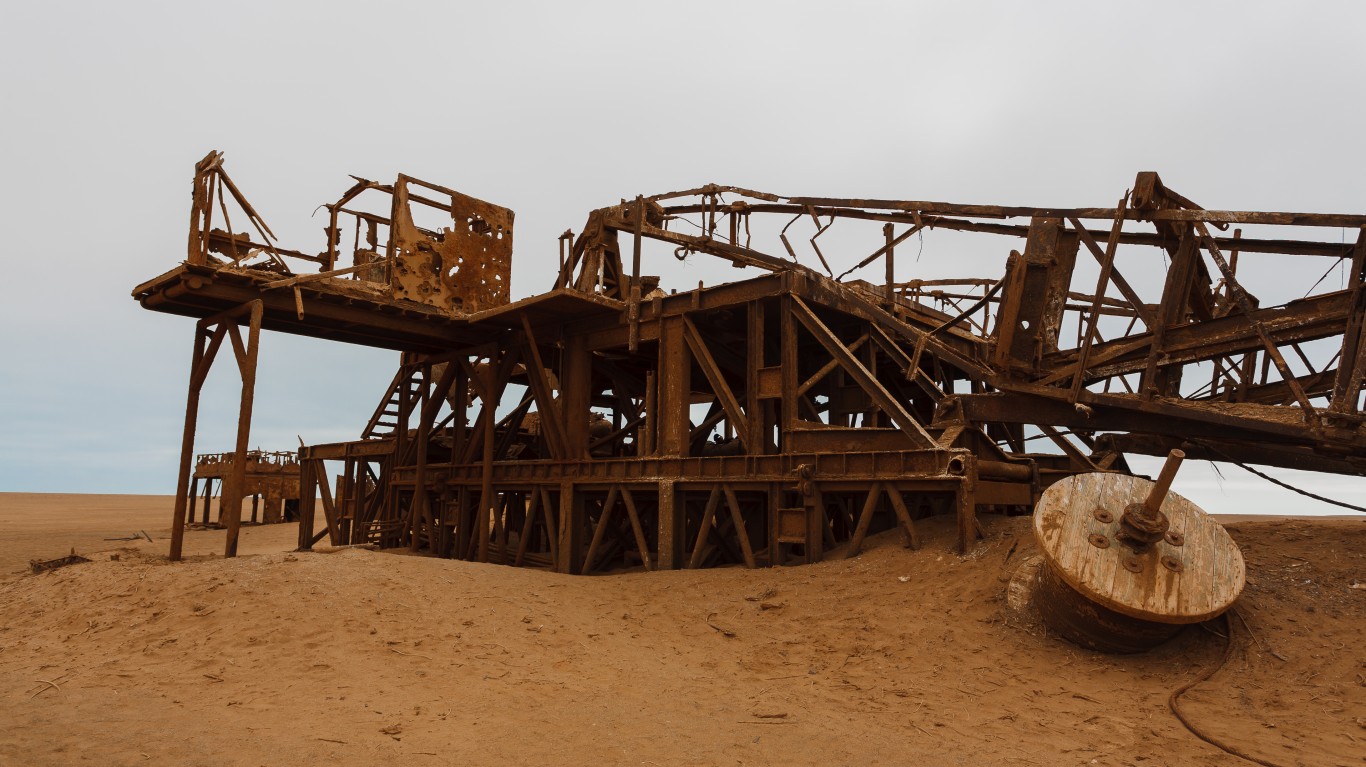
A new week means new speculation about when Chesapeake Energy Corp. (NYSE: CHK) will file for bankruptcy. In an exclusive story published Monday, Reuters said a filing could come as soon as this week and that Oklahoma City-based Chesapeake is currently negotiating debtor-in-possession (DIP) financing of some $900 million to continue operating as the company winds its way through bankruptcy proceedings.
Chesapeake reportedly missed a debt repayment scheduled for June 15 and may miss another due July 1.
Reuters cites two unnamed sources who say that Chesapeake also is trying to roll a portion of its $9 billion in long-term debt into the DIP package. The company is reportedly seeking a total DIP loan of around $2 billion.
Last week, Bloomberg, also citing unnamed sources, said that the company is negotiating a loan deal that would hand over a “majority of equity” to holders of a first-in, last-out (FILO) term loan. Those negotiations are reportedly ongoing.
Chesapeake’s Mountain of Debt
Under late CEO Aubrey McClendon, who died in an automobile crash in 2016, after being forced out of the company in 2013, Chesapeake’s total debt had ballooned to around $13 billion.
Shortly before McClendon’s death, crude oil prices ranged at around $30 a barrel, having plunged from a high of more than $100 a barrel in the summer of 2014. The plummeting price was due almost entirely to horizontal drilling and hydraulic fracturing (fracking), drilling techniques that Chesapeake had adopted relatively early on its oil and natural gas shale assets.
The company piled on debt as McClendon continued acquiring drilling leases, proving them up and then trying to resell them for a profit. The strategy worked until it didn’t. Then Chesapeake began selling off assets at whatever price it could get in order to make its debt repayments.
What a Bankruptcy Means for Chesapeake
In what usually is thought of as a last resort, Chesapeake in April completed a 1-for-200 reverse stock split, primarily in order to maintain its listing on the New York Stock Exchange. Shares of Chesapeake Energy traded at a pre-split price of around $0.13 and a post-split price of about $26.00. The stock closed at $16.00 on Tuesday (about $0.08 on a pre-split valuation).
Last month, in a filing with the U.S. Securities and Exchange Commission, Chesapeake said, “Management has concluded that there is substantial doubt about the company’s ability to continue as a going concern.” Since then, shares have traded at more than $77 and just above $9.
When a company like Chesapeake, with several billion more dollars of liabilities than assets, files for bankruptcy, there is essentially no chance that shareholders will receive a dime. Some market watchers have attributed the wild swings in Chesapeake’s share price to inexperienced investors sitting at home under government order and with no sporting events to bet on. Why not take a flyer on a well-known name that seems to be trading at a fraction of its value?
The answer, of course, is that even that fraction of value is too high. Chesapeake’s assets are currently valued at around $7.8 billion and its liabilities at around $11.7 billion.
Then there is the herd instinct of investors. If a stock jumps 400% in a very short time, some investors will jump in just for fear of missing out (FOMO) on a potential windfall. Chesapeake traded more than 15 million shares the day its stock price topped $77. That’s nearly three times a daily average volume that was itself inflated by the reverse split and previously low price per share.
In the early afternoon Tuesday, Chesapeake stock traded down more than 19% at $15.20, in a post-split range of $7.77 to $430.00.
At this time tomorrow, a new spate of bargain hunters may drive the price back up to around $20, and then the profit-takers will show up to push the share price down again. A bankruptcy filing could settle everything, amid much wailing from those left holding a drawerful of essentially worthless stock.
If anonymous sources are to be believed, the reckoning is only days away. Look away if you can’t stand the sight of blood.
Get Ready To Retire (Sponsored)
Start by taking a quick retirement quiz from SmartAsset that will match you with up to 3 financial advisors that serve your area and beyond in 5 minutes, or less.
Each advisor has been vetted by SmartAsset and is held to a fiduciary standard to act in your best interests.
Here’s how it works:
1. Answer SmartAsset advisor match quiz
2. Review your pre-screened matches at your leisure. Check out the advisors’ profiles.
3. Speak with advisors at no cost to you. Have an introductory call on the phone or introduction in person and choose whom to work with in the future
Get started right here.
Thank you for reading! Have some feedback for us?
Contact the 24/7 Wall St. editorial team.



